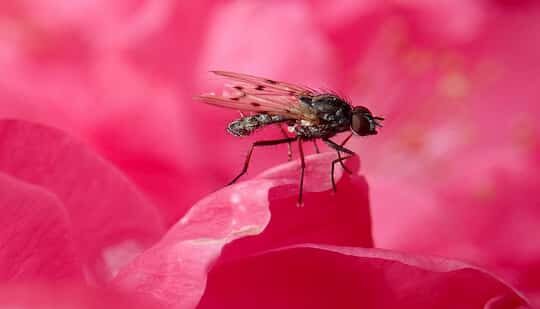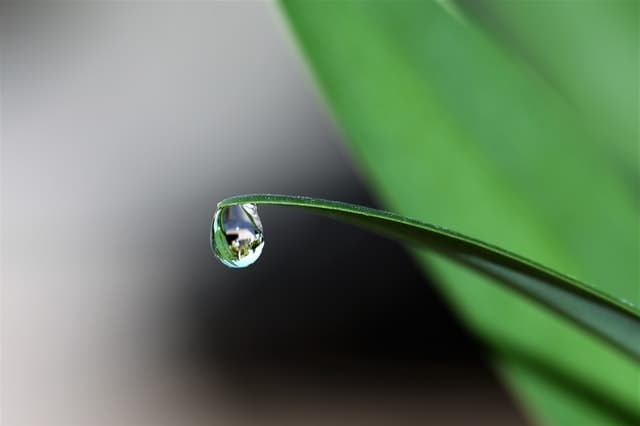Table of Contents
Why you should not water succulents at night?
The soil will be wet for a long time
Succulents belong from drought-prone areas where rainfall is scarce. So with the course of time, they have adapted themselves with those environmental conditions. The ideal way to grow any plant species is to provide them with conditions resembling their habitat.
- However, the sandy soil dries up quickly and never remains wet for a long time.
- On the contrary, if you water your succulents regularly at night, without proper sunlight it will remain damp for hours before it can receive some sort of heat and light.
Succulents are highly adaptive plants however one thing succulents they cant adapt well is the dampness in the soil as they are highly susceptible to root rot. Watering the succulents at night once or twice won’t affect the succulent however, in the long run, this practice can lead to root rot.
Chances of root rot development increases
Root rot is the worst nightmare for any succulent lover or any gardener. It is something that spreads slowly from the roots to all parts of the plant within a few weeks. The succulent leaves will change its color to brown or yellow and black patches can occur on the stem.
- Once the root rot spreads to the leaves and stem, it becomes rather impossible to save the plant.
- If detected early, doing surgery on the rotten portions of the succulent and repotting them are the only viable solutions.
Root Rot can only develop because of wet conditions in the soil which further leads to fungal growth. This in turn causes root rot.
Fungal gnats and other pest manifestations in the soil and in the leaves
Fungal gnats, fruit flies, and a variety of other pests like meaty bugs, spider mites, etc all are attracted by wet soil conditions and plant surfaces. This is particularly frequently seen to occur in case of indoor growing succulents as
- The air circulation is low inside the house
- Often time the succulents do not receive the optimum level of sunlight it needs.
Still, if you water your plant during the morning, it gets enough time to dry up. However, if you water your succulents at night even on a weekly basis, the soil can remain damp for days if the sunlight sources are poor.

Along with this, you should never water the leaves and branches of the succulent and only target watering the stem base and adjacent soil as water absorption mainly occurs through the roots.
Watering the leaves will do nothing other than invite pest manifestations as they crave for moisture-rich surfaces for their growth. The joinings of the branches, bare of leaves, all these are susceptible infection-prone areas. Over time this can lead to serious headaches of pest manifestations within the succulent pots.
The Excess water can freeze
Succulents by default need a lot less frequent watering in the colder months. It also majorly depends on whether it’s their dormant phase of the year or not.
- Watering your succulent at night especially during colder months of the year elevates the chances of shocking the plant with artificial frost.
Most succulents are not frosting tolerant and do not do well when exposed to colder temperatures below 10 degrees. Alongside this, if you get the soil all soaked up, the water won’t be able to evaporate as quickly as it could in presence of the sun.
When the night gets deeper, the temperature will fall further, and having water in the pot under these circumstances will do more harm than good.
The Oxygen availability decreases for the roots
If the drainage of your soil is average, then even with proper sunlight, it can take some time for the soil to dry up.
- Having drainage friendly soil is the most important need of any succulent as waterlogged conditions can have a severe impact on the plant.
- In case you water your succulents at night, the plant is sitting in waterlogged and damp conditions for 10 to 12 hours before it gets some sort of sunlight.
This high level of moisture in the soil makes the roots suffocate by reducing the aeration in the soil. As a result the oxygen availability for the roots also decreases.
How Long Should Succulent Soil Stay Wet?
- Typically if you have good drainage and the plant receives sufficient indirect sunlight, the succulent soil can dry up within two days comfortably even if it is growing indoors. However, this also depends on the time of year and whether it is the succulent”s growing season or not.
How to make the succulent soil dry up faster?
- Give the succulent proper sunlight: Place them in na place that gets at least 4 to 6 hours of indirect sunlight every day. Most succulents love getting filtered sun for at least 2 to 4 hours. Others prefer about 4 to6 hours of sunlight. So make sure you place your succulents accordingly as per their type. If you are growing them indoors then, east and south-facing balconies and rooms preferably get a lot better sunlight exposure so try keeping them near the sunlight sources. Suitable sunlight not only helps them to make better food and grow spontaneously but also quickly drying up the excess dampness in the soil.
- Place them in a drainage friendly soil: Succulents love drainage friendly soil so always grow them in cactus mix soil. You can also make your own soil mix. Just make sure the organic content of the soil is not more than 30%. Mix 25% potting soil with 25%pumice and fill out the rest with coarse sand, pebbles, and other volcanic rocks. You can also aim to create a separate layer of gravels and pebbles below the soil layer for further facilitating drainage. This is highly beneficial in the case of growing succulents without drainage holes.
- Be attentive towards Pot drainage: Always grow succulents in containers having drainage holes. These will ensure that the excess water flows out quickly from the soil. Also, try using terra cotta pots instead of plastic ones as they are highly porous and absorb water better from the soil. Also, they help in putting weight to the container so they won’t roll around easily.
Never water your succulents before the soil has dried up both on the top layer and down below. You can use a soil moisture meter to do this with ease. Or you can simply check the soil texture by dipping your finger. If the soil seems damp then consider not watering it for a few days at least. They can put up with underwatering but not overwatering.

When to Water Succulents?
- This can in turn leave scars on the succulent. This is more probable in the case of succulents kept in the balcony or in the garden but it can happen for indoor succulents growing beside windows.
- Succulents can put up with underwatering for a few days comfortably so even if you miss out on one morning you can try watering them the next morning instead of that evening. This is just an extra step you can go for caution nothing else.
Why you should always water succulents in the early morning?
- If you water them in the late evening or at night then it will remain completely damp for several hours before it gets the first exposure of light.
How do you know when a succulent needs water?
Water absorption occurs through the roots in the case of succulents. So you should only water your succulents when the soil is dry both in the upper layer and deep down. You can easily examine the soil dampness using a moisture meter. This small investment will save you several hours of headache down the line not only for growing succulents but for any plants.
The most common reason succulents die is because of overwatering and by using moisture meter you are eliminating that possibility completely as you will always know when the succulents need drenching. So every time the soil dries up you can drench the soil completely with water and do not stop watering until water starts flowing out of the drainage holes.
Give it a few days and then check the soil moisture. Schedule your watering routine accordingly. Also, try using filtered water or distilled water instead of using tap water as the latter is filled with chemicals that can harm the succulent growth.
Should you water succulents at night?
There are certain alternative suggestions that, as succulents follow the CAM photosynthesis pathway, they keep their stomata closed during the day and only open them for exchanging gases in the night. So watering at night can help them to absorb the moisture directly through the open pores.
Personally I have found that succulents do quite well with being watered in the morning. In fact, this is what most succulent growers do. Succulents may better absorb water during the night in their normal habitats however to try this on a regular basis in potted conditions that also indoors, is an adventurous thing to do. Succulents are heavily sensitive to damp soil and hence the probability of catching a root rot is quite high. So it is better to be safe than sorry.
Conclusion
- When in doubt dont water. Overwatering can lead to damp soil conditions and this practice, in the long run, can cause root rot. So as they are desert plants that can tolerate underwatering to some extent but not with overwatering.
